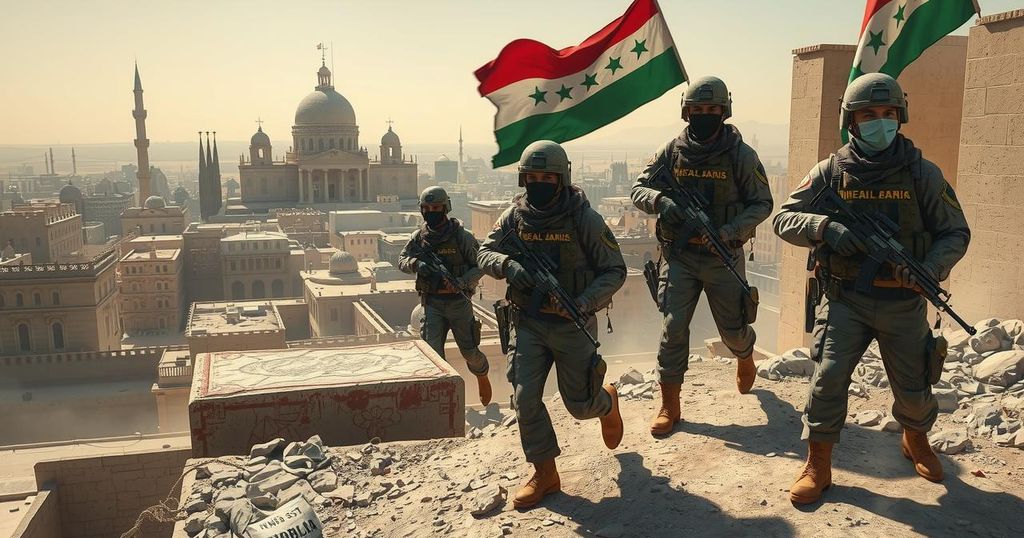The Syrian rebels are primarily led by Hayat Tahrir al-Sham, launching a significant offensive that captured key cities, including Aleppo and Hama. HTS, established by Abu Muhammad al-Jolani, has a controversial past linked to al-Qaida and is recognized as a terrorist organization by the US. The conflict involves Turkish-backed Syrian National Army aiming for a buffer zone against Kurdish militants. The dynamics show both collaboration and rivalry among the rebel groups amidst serious human rights issues.
The Syrian rebels making significant advances in the country are predominantly led by the Islamist alliance known as Hayat Tahrir al-Sham (HTS) and a network of Turkish-supported Syrian militias termed the Syrian National Army (SNA). Initially launching an unexpected offensive on November 27, these factions succeeded in capturing major urban centers, including Aleppo, Syria’s largest city, and Hama, the fourth largest.
Founded by Abu Muhammad al-Jolani, HTS has its roots in earlier insurgency movements, participating in the Iraqi conflict against US forces as part of a group that morphed into the Islamic State. Previously known as Jabhat al-Nusra, HTS allied with al-Qaida before dissociating in 2016 and rebranding itself. Currently, HTS is recognized as Syria’s most formidable rebel faction, although it is designated as a terrorist organization by the United States. Serious human rights violations have been reported within areas it controls.
Despite recurring collaborative efforts, HTS and the SNA have also faced moments of rivalry, reflecting diverging interests. The SNA, backed by Turkey, aims to establish a buffer zone along the Turkish border, primarily to deter Kurdish militant actions that threaten Turkish security. Turkey has traditionally supported opposition forces aiming to unseat President Bashar al-Assad but has recently advocated for a reconciliation process, vigorously denying any involvement in the latest military operations.
The ongoing conflict in Syria has witnessed various factions vying for power, amidst a complex geopolitical landscape. The rise of Islamist groups such as Hayat Tahrir al-Sham has shifted the dynamics of the rebellion, positioning them as key players in opposition to the Assad regime. HTS’s historical affiliations and transformations from militant insurgencies into prominent armed groups illustrate the evolving nature of Syrian insurgency. The involvement of external powers, notably Turkey, adds another layer of complication as it seeks to manage its borders and regional stability, indicating the broader implications of the Syrian conflict on international relations and domestic policies within the region.
In summary, the Syrian rebels, primarily represented by Hayat Tahrir al-Sham and the Syrian National Army, have achieved considerable military success in their offensive against the Assad regime. HTS, with its contentious past and current designation as a terrorist entity, plays a critical role in the ongoing conflict, amidst significant human rights concerns. The interplay of local and foreign objectives further complicates the landscape, reflecting the intricate and challenging nature of the Syrian civil war.
Original Source: www.theguardian.com






